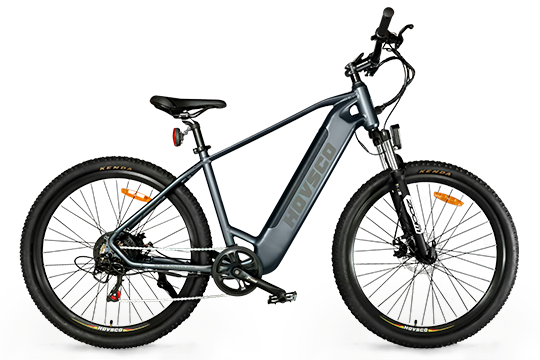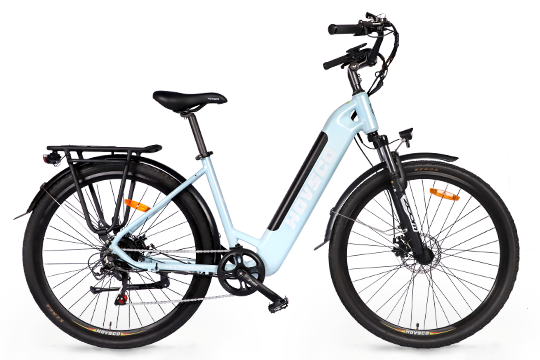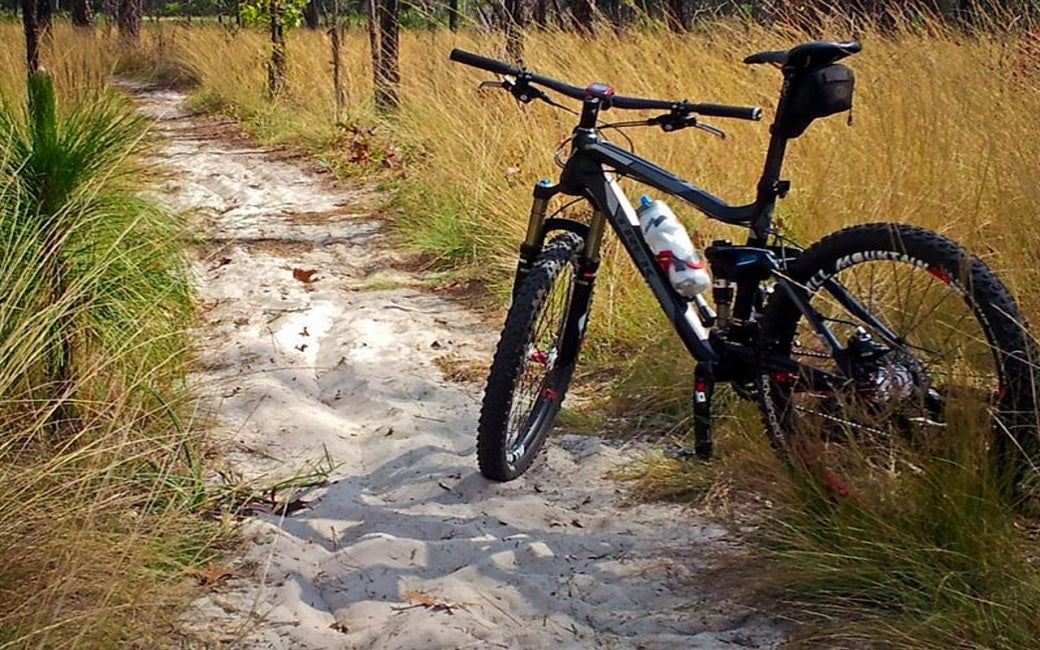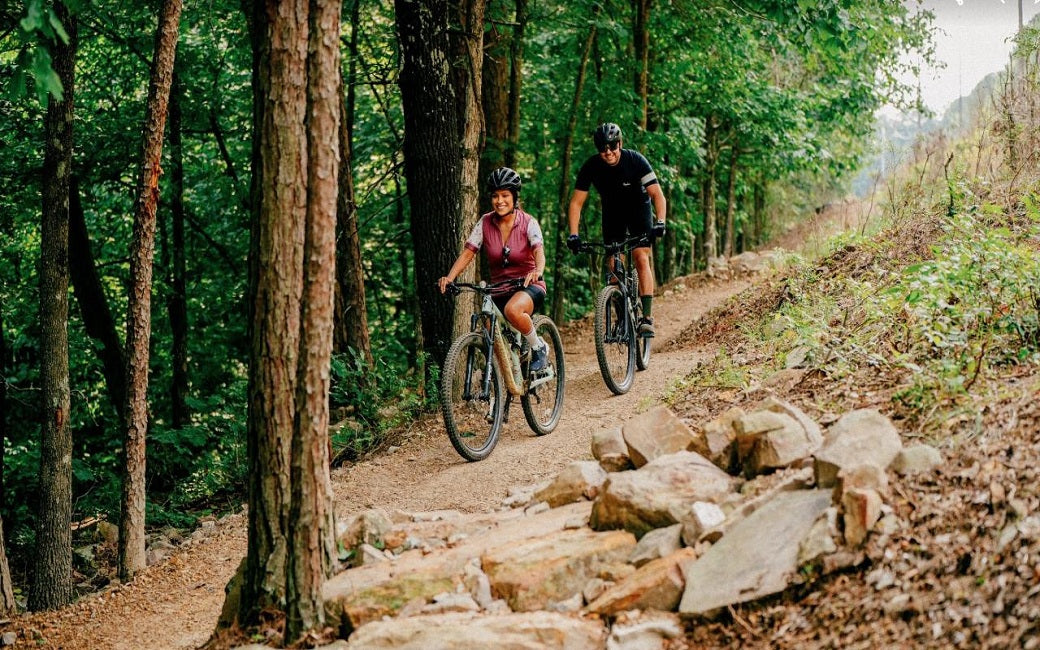How to Pump an Electric Bike Tire in 4 Easy Steps

Inflating your bike’s tires is a common and useful skill you learn after owning a bicycle for a bit of time. The process isn’t that complicated and after a couple tries you should have it down for life. But first you have to have someone teach you how to do it and that’s where we fit in so today we are going to go over how to inflate your bike tires.
Step 1. Determine the Valve Type
Depending on your bike, the bike tire will have either a Presta valve or a Schrader valve. Once you know what type of valve you’re working with, make sure your bike pump is compatible with that type of valve. Most bike pumps work with Schrader valves. You may need an additional adapter if your bike tire has a Presta valve.
Presta valves are typically found on higher-end bikes and are narrower in diameter
than Schrader valves. These valves have a lock ring at the top that closes the valve. To open a Presta valve, unscrew the top dust cap and place it where it won’t be lost. Then, loosen the lock ring on the valve stem using your finger. The lock ring won’t come off completely.
Once you’ve fully loosened the lock ring, press on the valve stem. If you hear air escaping, the tire the valve is ready to receive air. Once you have finished adding air to the tire, remember to screw the lock ring back into place to prevent air from escaping. You don’t need any tools to tighten the lock ring. Simply tighten by hand and then press to top and listen to make sure no air escapes.
The Schrader valve is the traditional bike tire valve that is wider than the Presta Valve. To operate this valve, unscrew the top dust cap and place it somewhere safe. If you over inflate your tires beyond optimal psi, you can release air. To let air out of this valve, we used a metal hex key to press the stem in the valve. Remember to replace the top dust cap after you’ve finished filling your tires.
Step 2. Determine the Pressure You Need
Running your tyres at either too high or too low a pressure can be potentially
dangerous, as well as negatively impact the handling of your bike. Just like with cars, there is a certain range of air pressure you want for your bicycle tires to function properly. This is measured in what is known as PSI, or pounds per square inch. In general, mountain bike tires will have a PSI of around 25 to 35 while road bikes will have a higher pressure of about 85 to 110.
To get the optimum PSI for your tires specifically, the answer is usually on the side of your tires. This will give you the best general range and then you can play around from within it to decide how much you like.
Step 3. Choose the Right Pump
Different air pumps will have various features. Some standard electric bicycle tire pumps are Floor Pumps, Mini Pumps, Bike-mount pumps, or CO2 inflators, just to name a few. Choosing the best pump is essential because you want to trust you requipment and begin riding as soon as possible.
Floor pumps are generally the fastest type of tire pump and therefore suitable to use with a fat tire e-bike that needs a lot of air. They are easy to use and an efficient use of your time. Floor pumps might be too big to carry with you on a
long bike trip. Instead, consider a portable air pump or bike frame-mounted pump,
which might take a little longer if the tire is very deflated. Finally, there are CO2 pumps that are fast but will be costlier if used often.
Step 4. Pump Your Electric Bike Tire
Once your pump is attached, depending on what kind you have, you should feel a
little bit of resistance while pumping. Of course with an electric pump, you won’t be physically pumping but you can likely tell if air is filling the tire or not fairly quickly.
One way to tell if you’re doing it right is by checking the pressure gauge. A completely empty tire will have a pressure around zero and you’ll be making your
way up. A small to medium sized hand pump will likely take around 5 to 10 minutes
to finish a road bike’s wheel depending on how quickly your arms tire!
If you don’t have a pressure gauge on your pump, you can also just feel out the tire with your hands. With a road bike, if you press in with your fingers on your bike, you shouldn’t really be able to press in that much. With a mountain bike, however, you should be able to press in about a centimeter.
Remember to always check your tires before you ride. This can be as easy as giving them a gentle squeeze with your hand, or using a pressure gauge to ensure you’re having the best ride possible. You should also consider keeping a CO2 cartridge in your jersey pocket or on your bike for those times when your tires need a littleextra air on the go.
Step 1. Determine the Valve Type
Depending on your bike, the bike tire will have either a Presta valve or a Schrader valve. Once you know what type of valve you’re working with, make sure your bike pump is compatible with that type of valve. Most bike pumps work with Schrader valves. You may need an additional adapter if your bike tire has a Presta valve.
Presta valves are typically found on higher-end bikes and are narrower in diameter
than Schrader valves. These valves have a lock ring at the top that closes the valve. To open a Presta valve, unscrew the top dust cap and place it where it won’t be lost. Then, loosen the lock ring on the valve stem using your finger. The lock ring won’t come off completely.
Once you’ve fully loosened the lock ring, press on the valve stem. If you hear air escaping, the tire the valve is ready to receive air. Once you have finished adding air to the tire, remember to screw the lock ring back into place to prevent air from escaping. You don’t need any tools to tighten the lock ring. Simply tighten by hand and then press to top and listen to make sure no air escapes.
The Schrader valve is the traditional bike tire valve that is wider than the Presta Valve. To operate this valve, unscrew the top dust cap and place it somewhere safe. If you over inflate your tires beyond optimal psi, you can release air. To let air out of this valve, we used a metal hex key to press the stem in the valve. Remember to replace the top dust cap after you’ve finished filling your tires.
Step 2. Determine the Pressure You Need
Running your tyres at either too high or too low a pressure can be potentially
dangerous, as well as negatively impact the handling of your bike. Just like with cars, there is a certain range of air pressure you want for your bicycle tires to function properly. This is measured in what is known as PSI, or pounds per square inch. In general, mountain bike tires will have a PSI of around 25 to 35 while road bikes will have a higher pressure of about 85 to 110.
To get the optimum PSI for your tires specifically, the answer is usually on the side of your tires. This will give you the best general range and then you can play around from within it to decide how much you like.
Step 3. Choose the Right Pump
Different air pumps will have various features. Some standard electric bicycle tire pumps are Floor Pumps, Mini Pumps, Bike-mount pumps, or CO2 inflators, just to name a few. Choosing the best pump is essential because you want to trust you requipment and begin riding as soon as possible.
Floor pumps are generally the fastest type of tire pump and therefore suitable to use with a fat tire e-bike that needs a lot of air. They are easy to use and an efficient use of your time. Floor pumps might be too big to carry with you on a
long bike trip. Instead, consider a portable air pump or bike frame-mounted pump,
which might take a little longer if the tire is very deflated. Finally, there are CO2 pumps that are fast but will be costlier if used often.
Step 4. Pump Your Electric Bike Tire
Once your pump is attached, depending on what kind you have, you should feel a
little bit of resistance while pumping. Of course with an electric pump, you won’t be physically pumping but you can likely tell if air is filling the tire or not fairly quickly.
One way to tell if you’re doing it right is by checking the pressure gauge. A completely empty tire will have a pressure around zero and you’ll be making your
way up. A small to medium sized hand pump will likely take around 5 to 10 minutes
to finish a road bike’s wheel depending on how quickly your arms tire!
If you don’t have a pressure gauge on your pump, you can also just feel out the tire with your hands. With a road bike, if you press in with your fingers on your bike, you shouldn’t really be able to press in that much. With a mountain bike, however, you should be able to press in about a centimeter.
Remember to always check your tires before you ride. This can be as easy as giving them a gentle squeeze with your hand, or using a pressure gauge to ensure you’re having the best ride possible. You should also consider keeping a CO2 cartridge in your jersey pocket or on your bike for those times when your tires need a littleextra air on the go.






Leave a comment